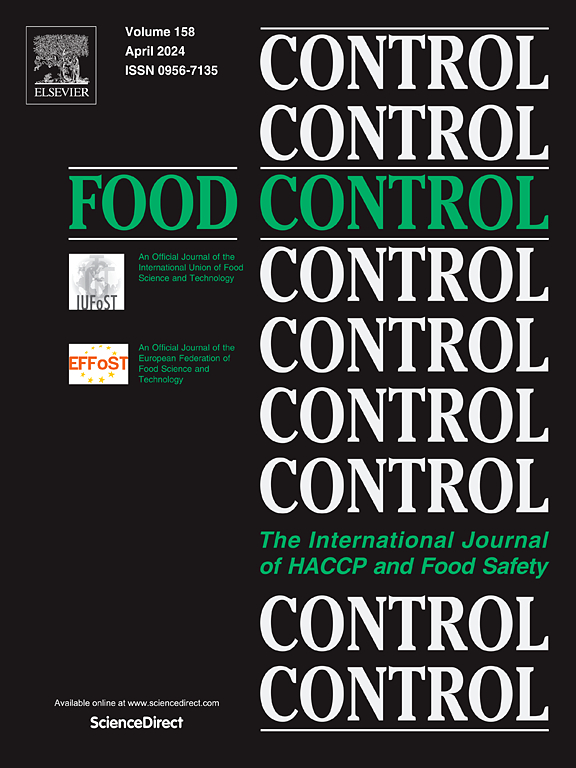Qualitative and relative abundance analysis of Alternaria alternata metabolites in pomegranate (Punica granatum L.) cultivars affected by Heart Rot using UHPLC-Q-TOF-MS
IF 5.6
1区 农林科学
Q1 FOOD SCIENCE & TECHNOLOGY
引用次数: 0
Abstract
Secondary metabolites of Alternaria alternata in juice extracted from fruit of pomegranate (Punica granatum) ‘Acco’ and ‘Wonderful’ affected by heart rot were identified using the UHPLC-Q-TOF-MS analytical method. Juice from healthy and infected fruit was analyzed comparatively with particular focus on mycotoxin content. Overall, 22 metabolites were detected, including the mycotoxins tenuazonic acid, alternariol, alternariol monomethyl ether (AME) and altenuene (ALT). Multivariate analyses, including Principal Component Analysis and Random Forest models, clearly separated the metabolic profiles of healthy and infected fruit. Symptomatic fruits, especially those of ‘Wonderful’, exhibited markedly higher levels of mycotoxins, such as alternarlactone A and altertoxin, suggesting that these metabolites are potential biomarkers for early detection of heart rot. In contrast, they were characterized by a substantial lower level of punicic acid, indicating heart rot infection affected negatively the nutraceutical value of juice due to the depletion of the content in this omega−5 fatty acid. This study provides better insights into the effects of A. alternata infection on the quality of pomegranate juice as well as new evidences in favour of a regulation of the mycotoxin level in pomegranate juice.
求助全文
约1分钟内获得全文
求助全文
来源期刊

Food Control
工程技术-食品科技
CiteScore
12.20
自引率
6.70%
发文量
758
审稿时长
33 days
期刊介绍:
Food Control is an international journal that provides essential information for those involved in food safety and process control.
Food Control covers the below areas that relate to food process control or to food safety of human foods:
• Microbial food safety and antimicrobial systems
• Mycotoxins
• Hazard analysis, HACCP and food safety objectives
• Risk assessment, including microbial and chemical hazards
• Quality assurance
• Good manufacturing practices
• Food process systems design and control
• Food Packaging technology and materials in contact with foods
• Rapid methods of analysis and detection, including sensor technology
• Codes of practice, legislation and international harmonization
• Consumer issues
• Education, training and research needs.
The scope of Food Control is comprehensive and includes original research papers, authoritative reviews, short communications, comment articles that report on new developments in food control, and position papers.
 求助内容:
求助内容: 应助结果提醒方式:
应助结果提醒方式:


